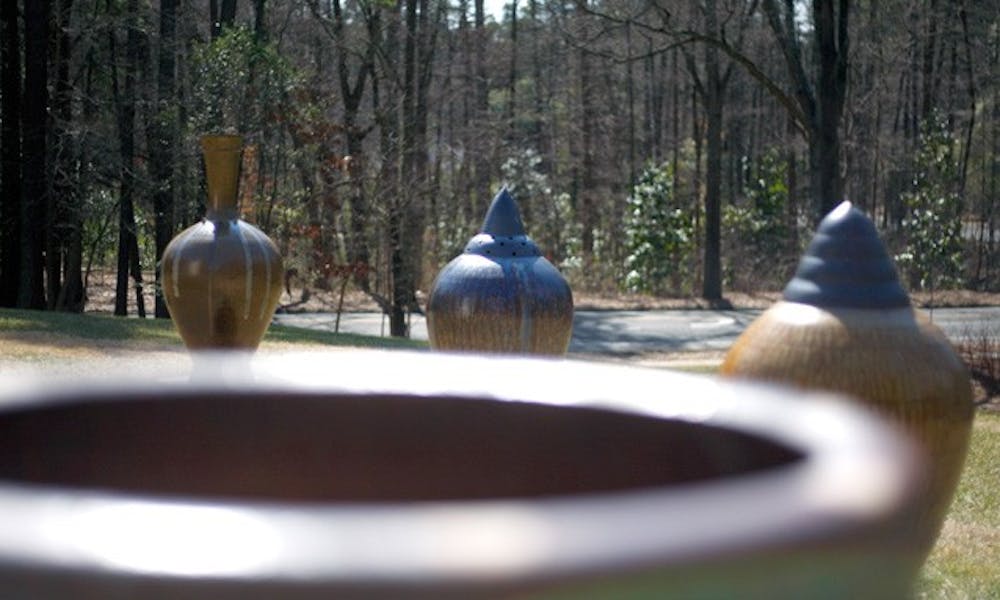Born in the United Kingdom, potter Mark Hewitt, now based in Pittsboro, N.C., is as much an artisan as an artist, eschewing the boundaries between high art and functional craft. His new exhibition, Falling into Place, features 12 large, made-from-scratch ceramic pots, and is on display on the Nasher Museum’s front lawn. Brian Contratto spoke to Hewitt about his work.
What’s the rationale behind placing the pots outside—and especially putting two on the roof?
Well, first of all, it’s a great honor to be invited to show at the Nasher. They’ve done a great job installing them—carefully secured, of course, so that they can’t be moved. [The roof] idea is a cross between chimney pots and gargoyles. When thinking about the architecture of the Nasher, it’s rectilinear, so in addition to putting the arc of pots on the ground, it’s a whimsy to put a couple of them in the focal point above the restaurant.
Could you summarize the creation process for your larger pots?
I get clay out of the ground from around North Carolina, and I’ll blend it together to make a clay body that’s workable. Very few people go through the trouble of doing it from scratch anymore—it’s a convoluted process. We use a corn mill that pulverizes the clay into fine powder... then have a machine that homogenizes the clay that we then shape the pots with. The glazing happens before the firing—you make the pot and then the glazes with colors made from different minerals that I also gather locally. It’s all cooked at 2,400 degrees Fahrenheit in a kiln the size of a school bus that I [also made myself]—it’s a modified version of a fourteenth century kiln from Thailand.
You’re involved in every step of the creation process for these pieces, including digging up the natural clay. Why go to the extra effort?
I think just like the Aboriginal people in Australia searching for sacred outcroppings of hematite [that they used for ancient art]—I get the same kind of joy when I get clay from the bottom of a gravel pit. It’s extremely rewarding for me to get my materials out of the earth rather than the ceramic supply store. There’s sort of a pioneering, prospecting, communing aspect to the materials themselves. It’s spiritual—deeply personal—to me.
What other kind of cultural influence informs your work, and why have you chosen to come [from England] to the American South?
Yes, I’ve visited [Asia and Africa], and I love working in the South because there’s a world-class vernacular pottery tradition here people don’t realize, that has been going on since the 19th century. Like local music it has been... cross-pollinated with European, Asian and African traditions, in a very early, great way.
What was the significance of pottery in these cultures, apart from their utility?
One of the pots is called “Memorial of the Fetish,” referring to the fetish jars made in West Africa—ritual objects that contained the fetish items they were offering, ornamented with spikes and strange things like that. They essentially became the receptacles for personal objects that had some quasi-religious or spiritual significance.
And what kind of significance do they hold for you?
People listen to music and have a keen musical sensibility, but no one can look at pots with that same degree of intelligence, because they haven’t been trained to. But for me, I can look at those pots and read between the lines. My bread-and-butter is the small pots I make, but the big pots are more of a sculptural crossover. Are they craft or are they art? I don’t care what you call them—they’re good. They’re amazing. I like the pots. That’s good enough.
Get The Chronicle straight to your inbox
Signup for our weekly newsletter. Cancel at any time.

